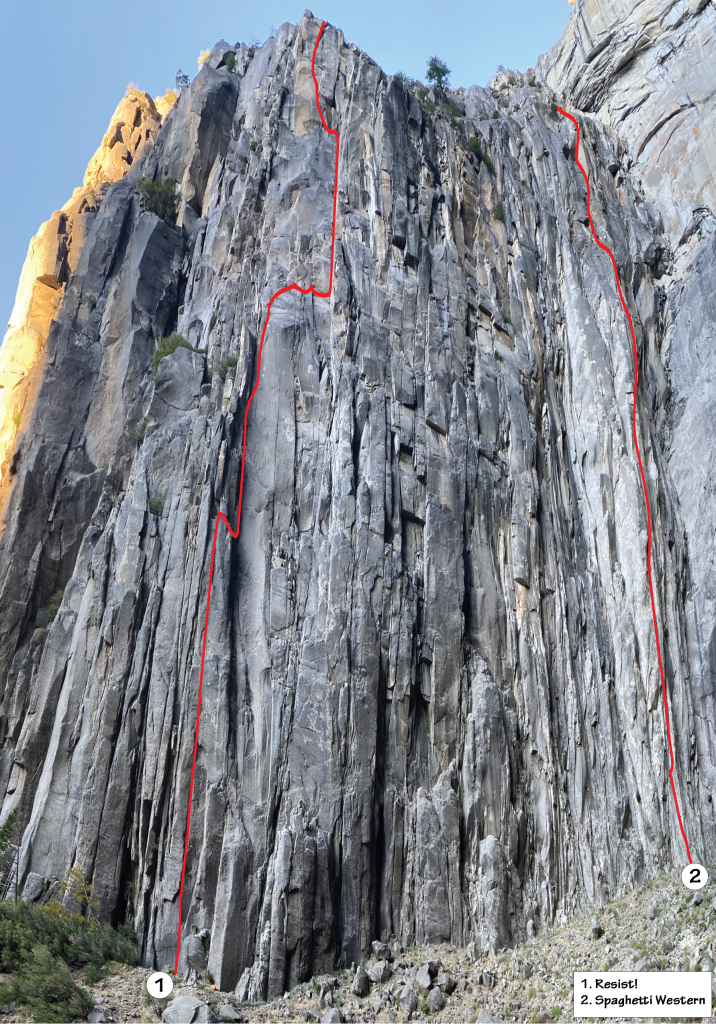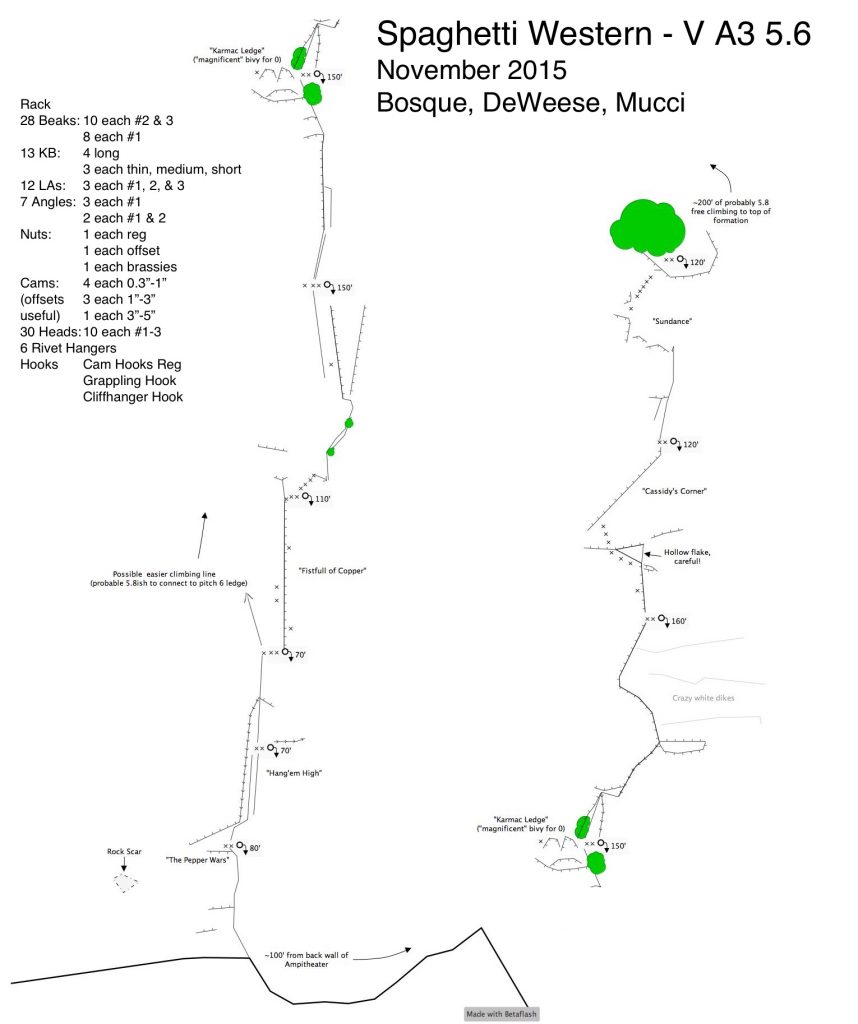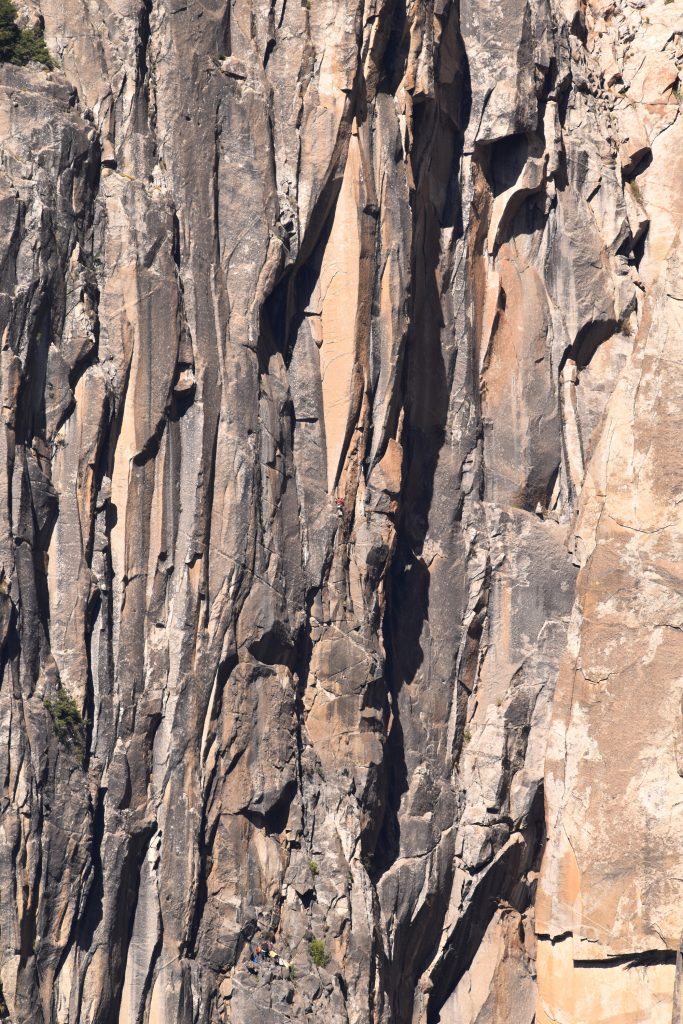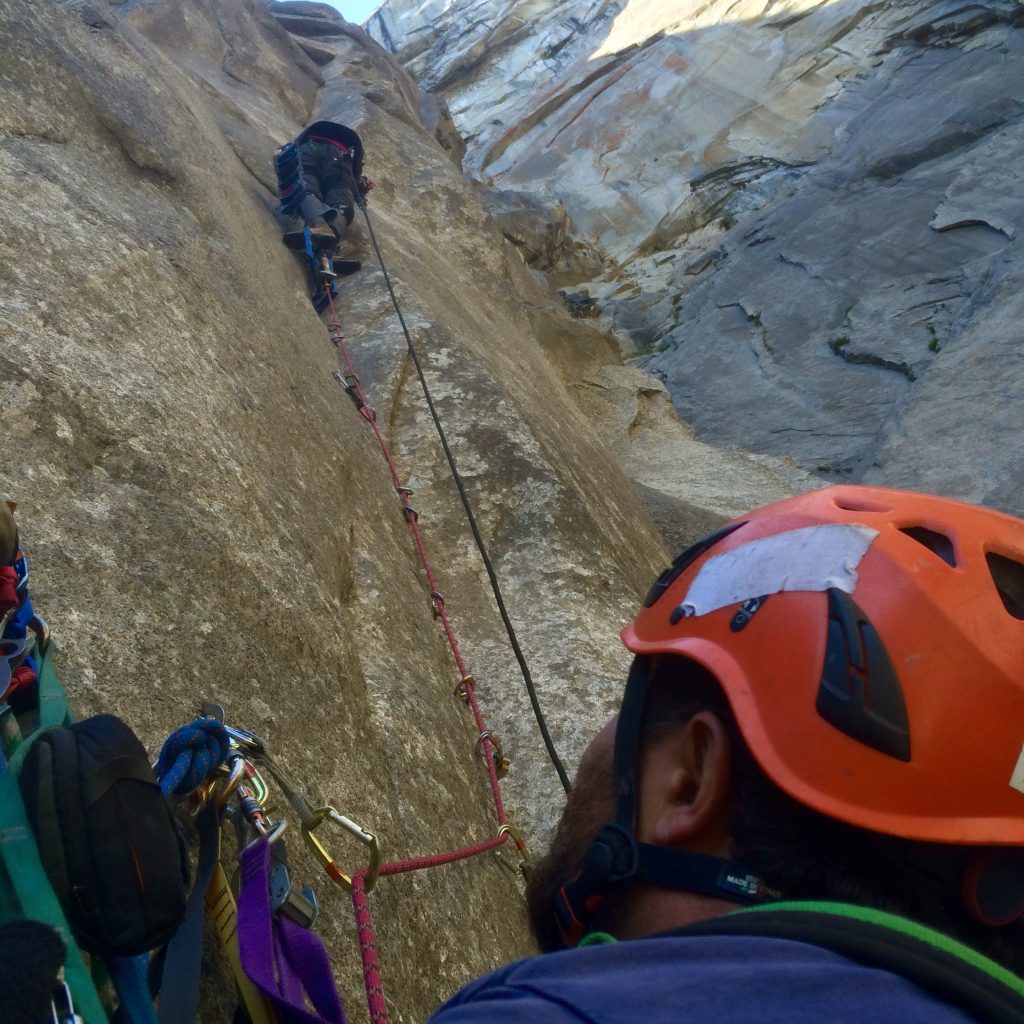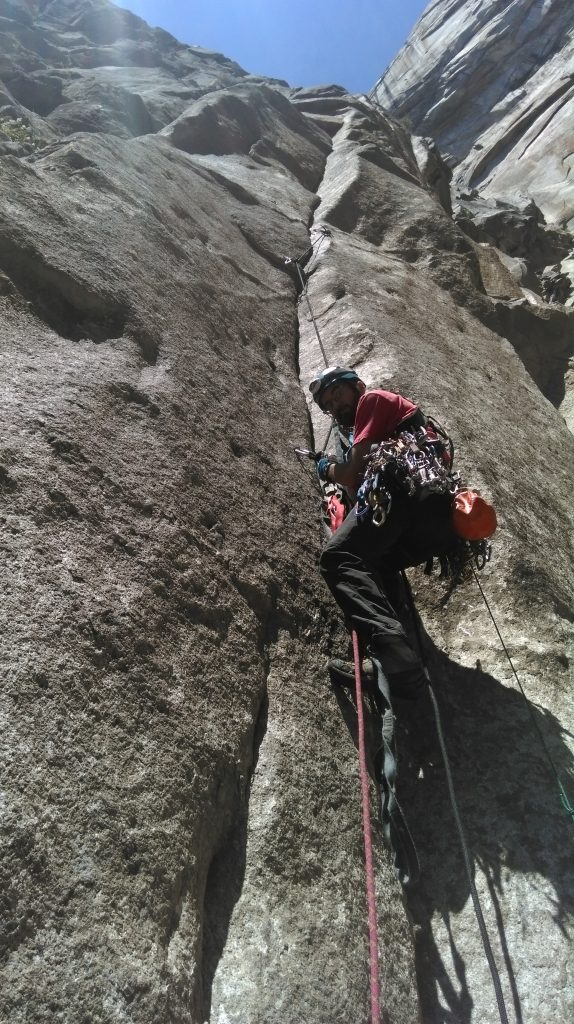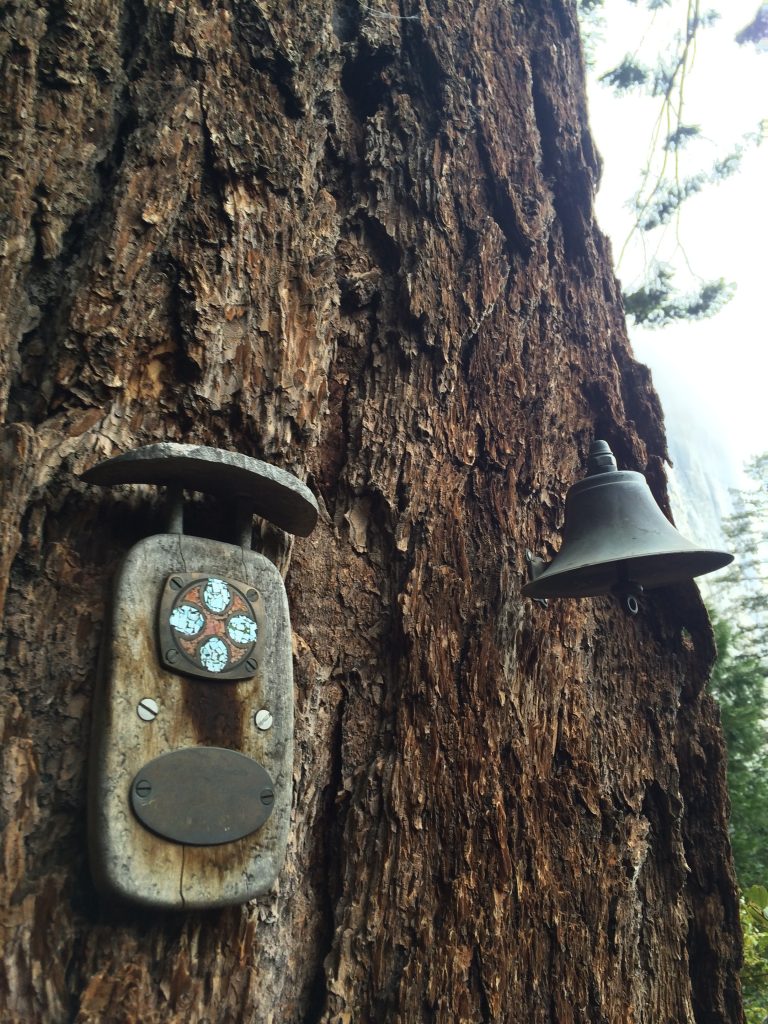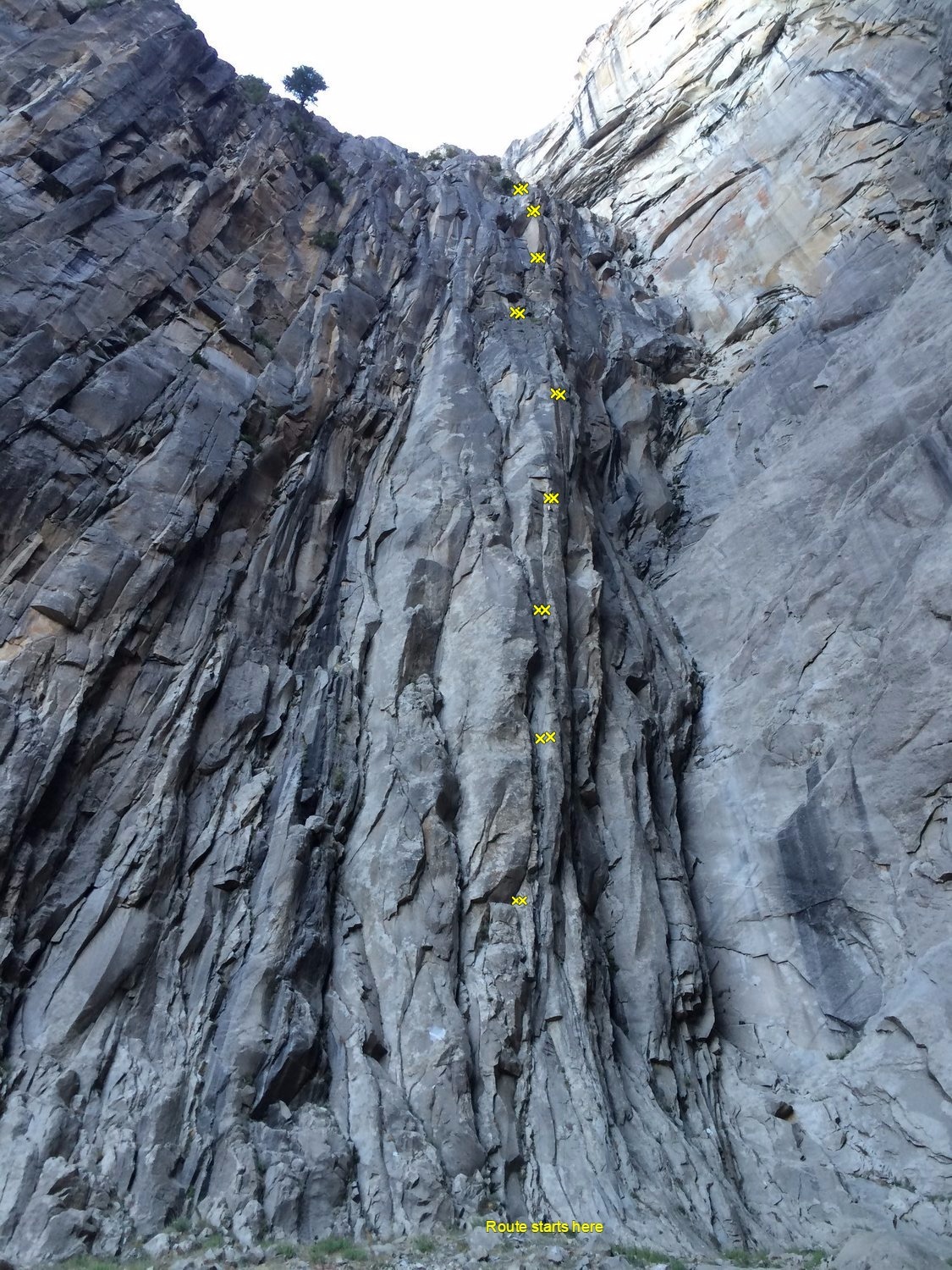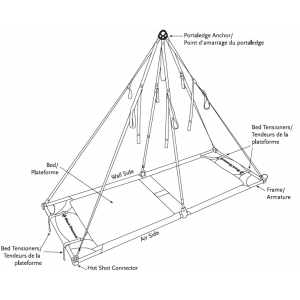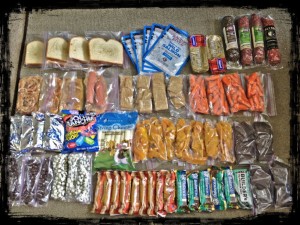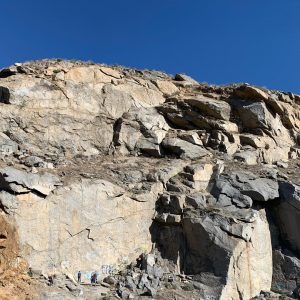Spaghetti Western V 5.6 A3
Mountain Project page for this route with pictures
In summer of 2015 Steve Bosque, Josh Mucci and decided to head up to Ribbon Falls to start a new line in the back left corner of the amphitheater (approx 100 feet to the left of the back wall). As the falls raged and I was unable to look up at the route without the
falling rain making it impossible to see through my glasses, we prepped our gear and put our faith in the weather report that promised us a break in the rain the next morning. While we waited, we took in the scene: nature at its most majestic with the power of the falls in stark contrast to the wild flowers and delicate bright green frogs that were unfazed by the rain, but frightened by our footsteps in a place that seemed both part of Yosemite and yet so far from the bustle of the valley floor that it seemed as though we were in an alpine setting with none of the normal sounds of civilization breaking through the wilderness experience Steve had promised.
Over the course of the next few weekends, we made quick work of the first three pitches, nailing a contrived A1 beak line between easier freeclimbing. After we had reached the top of the third pitch Josh Mucci was able to join us having quickly overcome an ankle injury that prevented him from joining us for the initial pitches. Stepping off the hanging belay at the start of the fourth pitch, the “perfect easy crack on vertical rock” that we had promised him turned out to be closed and marked the beginning of the more difficult climbing on this route. Armed with beak tips and copperheads we slowly worked our way up the “Fistful of Copper” pitch after which the route continued to push back with more pitches of difficult and circuitous aiding up more than vertical and closed cracks until we reached Karmac Ledge where we were able to setup a bivy to continue our push towards the top of the buttress we were following. This ledge became the site of what we believe to be the first ever magic show performed on a bigwall first ascent with Steve Bosque performing magic acts that honored the work of Jean Eugene Robert-Houdin.
After a bit of mungey free climbing off of our bivy ledge, another pitch of vertical aiding past an array of horizontal lightning strike dikes brought us to the start of the obvious beige corner clearly visible from the floor of the amphitheater. Happily, this feature, which looked like a roof from the ground turned out to be a less-then-vertical corner that offered spectacular climbing back out onto the edge of the buttress. Upon our first trip up to the Amphitheater, we had found a memorial with a bell for a man named Terry Cassidy attached to one of the more prominent trees that lurked at the edge of the hiker’s trail. Ringing that bell and saying Cassidy’s name marked the beginning of every weekend that we pushed our route closer to its inevitable end. In order to keep his spirit alive, we named this feature “Cassidy’s Corner” to add another memorial to this person we’d never met but who watched over us as we basked in the wilderness experience that found us happily hiking back weekend after weekend.
A final pitch of easy mixed aiding and climbing with a final sketchy aid traverse and rivets interspersed with beak tips and hooks to the summit just as the sun was setting gave us our final pitch name of “Sundance.” We stood at the top of the buttress and the end of our aid climbing adventure as weather reports indicated that El Nino had plans for a white christmas and an end to climbing access to our corner of Ribbon Falls Amphitheater.
Another pitch of circuitous free climbing in the 5.8 range for about 200’ will bring a climber to the top of the formation and an obvious tree that can be used to return to the ledge at the top of the route. The route is equipped to rap back to the ground without the need to leave any ropes fixed.
Pitch-by-pitch breakdown
Pitch 1: (80’ A1 5.6) Mixed free and contrived (but fun) aid to a sloping ledge. (Probable free variation approaches from the left)
Pitch 2: (70’ C2/A1) “Hang’em High” Head up and right around a bulge into a corner with broken cracks.
Pitch 3: (70’ C2/A1) Continue up corner past a roof until reaching belay to the right of the crack system. (May be possible to follow crack systems left a this point to free climb at 5.moderate to connect to “Karmac Ledge” – I’d bring a bolt kit if you’re planning on trying this as we did not go this way)
Pitch 4: (110’ A3) “Fistful of Copper” Step right from belay into right-facing closer seam that takes beak tips and copperheads. Sustained.
Pitch 5: (150’ A2) Rivets up and right from belay then penji to obvious crack system. Follow this up and then right around the arête through good cracks before heading back left to meet obvious left-facing corner (awkward) before moving left past a bolt to reach flaring crack to belay.
Pitch 6: (150’ C2 5.6) Easy mixed free and aid as angle lessens. Free climbing past blocks and ledges to reach “Karmac Ledge”. Camhooks very useful.
Pitch 7: (160’ A1+ 5.6) Free climbing up and right from belay before traversing around arête and to obvious flat ledge. Head left on broken beak cracks past wild white dikes until veering back right towards belay at base of large corner. Fun pitch!
Pitch 8: (120’ A3) “Cassidy’s Corner” Heads and beaks up obvious left-facing corner until rivets around very hollow block. Follow rivets to right angling roof/corner the takes cams, arrows, and blades to belay. Stellar pitch.
Pitch 9: (120’A3) “Sundance” Easy aid until leftward traverse along thin flakes and discontinuous corners until hooks, beaks, and rivets lead up to belay ledge.
Pitch 10: (~200’) Wandering free climbing to rim. Best route heads climber right from the belay, then veering leftwards towards obvious tree at rim.
